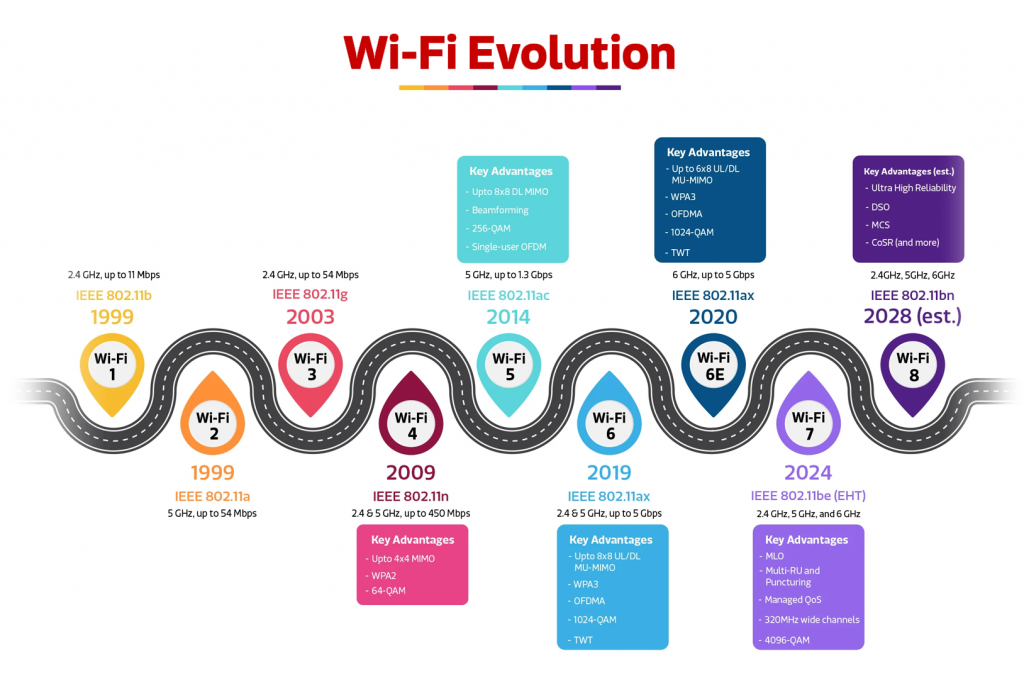




Wi-Fi 7 (IEEE 802.11be) is poised to become a game changer. It brings improvements in speed, latency, reliability, and capacity — all critical for modern digital applications. Here’s a clear look at what’s new, why it matters, and what ISPs and network managers should be doing to stay ahead.

Wi-Fi 7 isn’t just an incremental upgrade — it’s a leap toward connectivity that meets the demands of tomorrow.
Jaze Networks helps businesses and service providers manage users on Wi-Fi networks and deliver seamless Wi-Fi experiences to end-users.
Jaze Access Manager provides solutions in integration with all lead wireless equipment manufacturers to deliver customized on-boarding workflows, granular policies for Wi-Fi Access through AAA and logging for compliance.
Click here to know more on Jaze Access Manager.
Remember the days when every device needed a wire? A mess of Ethernet cables under your desk, behind your TV, and snaking across the living room? That’s about to become history.
Wi-Fi 7 is not just another upgrade in wireless technology — it’s a leap into the future. With unprecedented speeds, lower latency, and smarter connections, it’s designed to replace the Ethernet cable for most users. Let’s dive into why it’s time to cut the cord.
Speed
Latency
Capacity
Bandwidth
Efficiency
For years, Ethernet has been the go-to for speed and stability. But Wi-Fi 7 changes the game:
Wi-Fi 7 routers are starting to roll out, bringing enterprise-grade wireless capabilities to homes and businesses. If you’re setting up a new workspace or upgrading your network, this is the tech to watch.
Say goodbye to tangled cables, drilling holes in walls, and limited mobility. Wi-Fi 7 is here — and the future is wireless.
Wi-Fi 7 brings the next leap in wireless connectivity—offering ultra-fast speeds, significantly lower latency, and higher efficiency for high-density environments. With support for demanding applications like 8K streaming, AR/VR, and real-time collaboration, Wi-Fi 7 is built to meet the needs of modern, high-performance networks.
Jaze Access Manager seamlessly integrates with all leading Wi-Fi 7 vendors, delivering fully managed hotspots and 802.1x authentication through RADIUS-based AAA, ideal for secure guest access and scalable campus wireless deployments. Click here to know more
Wi-Fi 7 represents a significant leap forward in wireless networking, offering unparalleled speed, efficiency, and capacity. Its advanced features are set to transform the way we experience connectivity in both home and office environments. Ensuring that networks are equipped to handle the demands of today’s digital world and beyond.
Building upon the foundation of its predecessors, Wi-Fi 7 introduces a suite of enhancements designed to meet the burgeoning needs of modern applications.
Wi-Fi 7, officially known as IEEE 802.11be, is the newest standard in wireless networking. While maintaining backward compatibility with previous Wi-Fi versions, it offers significant improvements in speed, efficiency, and capacity.
While Wi-Fi 7 is backward compatible with earlier Wi-Fi standards, unlocking its full potential requires upgrading to Wi-Fi 7-enabled devices and routers. Early adopters can expect to see routers and access points from major manufacturers becoming available, with devices like smartphones, laptops, and smart TVs following suit. As the technology matures, a broader range of Wi-Fi 7-compatible products will enter the market, making it an opportune time to consider future-proofing your home or office network.
Jaze Access Manager integrates with all leading Wi-Fi 7 vendors to provide managed hotspots and 802.1x authentication with radius based AAA for guest access and campus wireless networks. Click here to know more